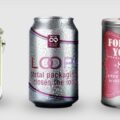Packaging research from Industrial Physics highlights how waste reduction and cost considerations are driving change for beverage packaging industry professionals, leading to innovations in manufacturing and testing processes.
The world leader in packaging, product and materials testing and inspection conducted a global survey of packaging professionals operating in a variety of industries. 71% of respondents working in the food and beverage packaging sector consider it very important to explore new developments in packaging. However, the survey found key challenges to overcome in the context of packaging innovation. Limited performance and durability were highlighted by two-thirds of respondents (65%) as the biggest material-related challenge in packaging innovation.
Steve Davis, Product Line Manager at Industrial Physics, commented:
“With performance proving to be a key area of focus for packaging professionals, the beverage industry is examining every stage of the packaging lifecycle for innovation and advantage. While some industries are replacing materials completely, the beverage industry is looking at what can be done to make materials even more efficient for their application. In canned beverages, for example, aluminum is the most suitable material because of its durability and strength to withstand the pressure of carbonated beverages. So rather than replacing it, innovators are making it even more efficient for its application through processes such as lightweighting.”
Lightweighting is an approach that decision makers in food and beverage packaging are taking to overcome one of their biggest challenges in packaging innovation, the cost of materials (60%). The manufacturing process allows them to reduce the overall amount of material required to create metal containers, while maintaining the durability and performance needed to protect the contents of the can.
The research also revealed that, while ensuring packaging quality is the top motivation for those innovating in the food and beverage industry (69%), material reduction still tops the list when it comes to major developments on the horizon in the next five years (52%). Just under half of industry respondents also cited materials choice as an area that could lead to major breakthroughs in the coming years (48%).
Steve continued, “Beverage packaging companies are also investigating how testing processes can support their innovation goals. In addition to the focus on material reduction, 61% of professionals cited waste reduction as their primary goal for packaging innovation, which is why we have seen an increase in methods such as non-destructive seam inspection. Traditionally, seam inspection required the destruction of a can for analysis; however, the new approach allows manufacturers to reduce waste by eliminating the need to destroy cans, process a large volume of cans more quickly, and facilitate early intervention when a defect occurs.”
Questions on packaging investment revealed a strong focus on sustainability for the food and beverage sector, with the top three areas including:
- Recyclability 60% Recyclability
- 59% waste reduction
- 43% reduction in plastic use
Steve concluded: “Reducing plastic bottles in the beverage industry continues to be a focus for many companies in line with sustainability goals and legislation. Following a rapid increase in can manufacturing in recent years, companies are now benefiting from a smooth transition from PET to metal cans and bottles. Its infinitely recyclable nature and ongoing developments in manufacturing and testing processes mean that there are many advantages to be gained. However, the equipment and testing processes required for metal packaging compared to PET are very different. To ensure the safety and quality of the packaging, companies must ensure that they can access the necessary expertise and equipment.”














